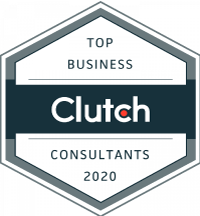Six Ingredients for winning ideal clients sustainably without leaving your office.
…
So you googled “agency new business strategy” or something like that.
You might be thinking, “I’m running a marketing agency for crying out loud, and if anyone should NOT have to get help with this sort of thing, shouldn’t it be me?!”
Don’t worry, you’re not alone!

From working with dozens of agencies and running over seven-thousand new business campaigns since 2014, we’ve found that, for many agencies, getting beyond personal networks and referrals to win clients can be like jumping into cold water.
The shift to digital makes this even more challenging, since trade shows and meet-and-greets might not be possible.
If you’re ready to get proactive, set your watch to your pipeline, and win ideal clients consistently, then you’re in the right place.
…
Ingredient #1. Specialization.
Everyone hates to be pigeonholed, but specialized agencies are eating everyone’s lunch.

Over and over, marketing decision-makers tell us how much weight they put on specialization, be it by industry focus, discipline, or some combination of the two.
This all makes sense once you realize that even relatively small brands often employ dozens of agencies, and marketing decision-makers need to quickly understand and remember the problem your firm solves and who you solve it for.
More importantly, once you’re specialized, everything else becomes A LOT easier…
You can identify your future clients quickly, build a convincing case for a partnership, fulfill it in a more predictable and cost-effective manner, and build a profitable and potentially sale-able business.
…
Ingredient #2. Division of Duties.
To paraphrase Derek Sivers, “If information was the answer, we’d all be millionaires with great abs.”

One of the biggest traps we see is inconsistency, and you probably know what that looks like when you’re in the middle of a heads-down project.
The problem is that buying cycles for complex marketing services are long, and stopping new business activity can be like losing momentum on a steep uphill cycling climb.
Being consistent is all about division of duties and the right butts in the right seats.
In a perfect world, you’d have a new business team like the one below, each with a clean division of duties.
But what if your team is small or non-existent?
You’ll either need to jury rig this team internally, or get help from the right fractional team.
If it’s just you and a partner handling the whole new business process, then divide up your time and energy between these roles (kinda like you have split personality disorder!).
What each role entails:
- The proverbial closer. (sometimes called Account Executive).
- Build and maintain relationships.
- Leads proposal process.
- Qualities: poise, persuasion, EQ, etc.
- Runs outreach campaigns.
- Writes copy and creates content.
- Manages BDR and list builders.
- Qualities: creative, market intelligence, systems thinker.
- Follows up with prospects to book appointments.
- Tees up prospects for BD person / AE.
- Qualities: similar to BD role, typically junior version.
- Builds lists and manages data.
- Technical.
- Ensure data hygiene between different interfaces like LinkedIn, outbound email platforms, and CRM.
Guidelines for staying consistent:
- Schedule sales duties in your calendar.
- Work from bottom-to-top of pipeline, that way your best energy goes to your best prospects.
- Live in your pipeline, not in your inbox.
...
Ingredient #3. Effective Outreach and Appointment-Setting.
Once you know who you’re going after and who’s doing what you can start the outreach process…
Step 1: Identify Target Accounts.
If you need inspiration for ideal accounts, build your list around your best clients.
We frequently get feedback from clients that building an account-based list, although sometimes tedious, is one of the most insightful and useful exercises they’ve performed for their agencies in years.
There are countless databases and lisbuilders out there, but if you’re starting this process for the first time, there’s no tool better than LinkedIn Sales Navigator for market research.
Step 2: Identify Titles.
Once you’ve built your account list, think about a few possible titles.
These can be at different points in the decision-making process, but all things being equal, we typically like to go up the ladder and get referred down.
As usual, if you get stuck, consider the titles of your best clients.
Step 3: De-Risk the Conversation.
Don’t worry about overcomplicating the process with a complex funnel across multiple channels – yes, that has its place, but it’s better to start with one simple goal in mind: de-risking a business conversation, NOT closing a deal, or “nurturing” (whatever that means).
Put simply, what would it take to make a 15-minute conversation a no-brainer for the prospects you identified?
Ideas we’ve implemented in real campaigns:
- Making a warm LinkedIn connection before making an ask over email.
- Sending personalized videos.
- Referencing vertical-specific case studies.
- Referencing colleagues with whom we’ve connected.
- Adding a custom snippet into the outreach referencing new events and rollouts in the prospect’s organization.
- Asking for feedback over email to determine fit.
- Including a PS line linking to a relevant thought leadership placement (more on that later).
The list goes on, but the important thing is that the copy is focused on the prospect and makes a conversation a lot less murky.
Don’t worry if your campaign is messy, small, or hard to scale – it’s better to get started, hear feedback from your market, and gradually automate and delegate.
Make sure you prioritize top-of-funnel before going deeper…
…
Ingredient #4. Antifragile New Business Process.

As developed by Nassim Taleb, Antifragility is a property of systems that increase in capability to thrive as a result of stressors, shocks, volatility, noise, mistakes, faults, attacks, or failures.
If Taleb is too wonky for you, you might look to Mike Tyson, who famously argued, “Everyone has a plan until they get punched in the mouth.”
Too often we see agencies waste time over-planning their new business process before they are able to actually test their ideas through reps on sales calls with real prospects.
So what’s the ideal new business process for your agency?
It will depend on your offering and the verticals you’re serving. For example, one of our clients who focuses on large healthcare organizations must plan for a relatively long and complex process, whereas another agency in B2B tech can aim for a two-call close.
Here is our process at Sales Schema, and our most successful clients have some variation on this:
- Qualification call.
- ~30 minutes.
- Lay out the entire process and set expectations.
- Qualify and determine fit.
- Clarify understanding.
- Quick call and/or email.
- Reiterate your notes.
- Build rapport.
- Goal: get to “Yes, that’s right…”
- Proposal call.
- ~1 hour.
- 80% boilerplate, 20% custom.
- All decision-makers on board.
- Early on, set expectations for a yes/no decision sometime after the proposal call.
- Address common objections before they arise.
- Bring in SMEs as needed.
- Closing call.
- Answer remaining questions.
- Get yes/no decision.
…
Whatever your process, the important thing is that it protects the only resource you control: your time.
This means taking measured risks based on the cards that are showing and mutual skin in the game between you and the prospect.
For example, let’s say a prospect agrees to commit her team to a one-hour proposal call – it’s then worth investing you and your team’s time. On the other hand, if a prospect says, “send me a proposal”, it’s not worth the time risk.
Sales Training Resources.
When it comes to building presentational skills, and creating scripts, proposals and so on, I like to look to the books that stand the test of time.
My favorites are You Can’t Teach a Kid to Ride a Bike at a Seminar and The Challenger Sale (in my opinion, the spiritual successor to Spin Selling).
When it comes to copywriting and positioning, my favorite is Breakthrough Advertising.
…
Ingredient #5. Re-engagement.
What happens if you don’t get a response or your prospect doesn’t close? Are they “burned” forever?
Not typically, and quite the opposite is usually true.
In the longer-term, the most and biggest wins come from re-engagement.
From a high-level, here’s how re-engagement works.
- You qualify your prospect.
- For whatever reason, they don’t buy.
- A filter in your CRM tells you it’s been at least 30 days since you contacted them.
- You restart the conversation…
What do you say? How do you reach out without being irrelevant or annoying?
Re-engagement ideas from real campaigns:
- Asking what decision was made.
- This simple approach often produces the most results, and the answer is usually “we’ve done nothing.”
- Sharing new stuff, like projects, hires, or products and services.
- New content.
- Networking intros.
- Personalized invites to webinars and events.
- External placements…
…
Ingredient #6. Thought Leadership.

So you might be wondering, “What about the giant buffet of marketing options on the table for our agency?”
Should you make your team write articles, host webinars, start a podcast, invest in paid media?
As always, it depends on your offering, but we’re big fans of turning your sail into the wind of existing audiences.
Examples:
- External podcasts.
- Speaking engagements.
- Guest roundups and textual interviews.
- Joint webinars with companies serving the same verticals.
- Traditional PR.
- Guest posts.
…
The best part of plugging into existing audiences is that you know you have a validated audience before you invest time on content production, and you’re building authority at the same time.
This creates a surround sound effect that will benefit your outreach campaigns, close rates, recruitment, and other areas of the agency.
Once placements go live, you can typically repurpose and share the content on your own channels, which makes external thought leadership a two-birds-one-stone strategy.
A couple great resources for identifying thought leadership opportunities include Ninja Outreach and Listen Notes.
Plus, you can implement an outreach process that resembles and runs parallel with the account-based strategy covered earlier.
If you’re stuck on what you should pitch or talk about, here are a few angles that have worked well for us and our clients.
Thought leadership angles:
- Controversial opinions ie. calling BS about something in your space.
- War stories from client projects (anonymized if necessary).
- Highly-tactical.
- Prophecy.
- Personal stories.
…
The person on your team conducting interviews is up to you, just as long as they have knowledge and poise.
…
Conclusion.
The process of building and running an effective agency new business strategy does not have to be overly complicated and intimidating. Contrary to some opinions, your agency does NOT have to be everywhere.
Instead of getting pulled in every direction at once, start by getting focused on who makes an ideal client, and then pick one or two channels for reaching them and building authority.
As always, done is better than perfect, and the sooner you start talking to your future clients, the sooner the best strategy will take shape.
…









One Response
Comments are closed.